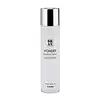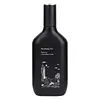What's inside
What's inside
 Key Ingredients
Key Ingredients

 Benefits
Benefits

 Concerns
Concerns

 Ingredients Side-by-side
Ingredients Side-by-side

Water
Skin ConditioningGlycerin
HumectantAlcohol
AntimicrobialButylene Glycol
HumectantPropylene Glycol
HumectantGlyceryl Acrylate/Acrylic Acid Copolymer
HumectantNiacinamide
SmoothingBetaine
HumectantCeramide AP
Skin Conditioning1,2-Hexanediol
Skin ConditioningPhenoxyethanol
PreservativeSodium Hyaluronate
HumectantSodium PCA
HumectantBeta-Glucan
Skin ConditioningPEG-60 Hydrogenated Castor Oil
EmulsifyingPhenyl Trimethicone
Skin ConditioningAcacia Seyal Gum Extract
HumectantTriethanolamine
BufferingCarbomer
Emulsion StabilisingPanthenol
Skin ConditioningCopper Tripeptide-1
Skin ConditioningSh-Oligopeptide-4
Skin ConditioningAllantoin
Skin ConditioningCamellia Sinensis Callus Culture Extract
PerfumingParfum
MaskingAdenosine
Skin ConditioningDisodium EDTA
Caffeine
Skin ConditioningWater, Glycerin, Alcohol, Butylene Glycol, Propylene Glycol, Glyceryl Acrylate/Acrylic Acid Copolymer, Niacinamide, Betaine, Ceramide AP, 1,2-Hexanediol, Phenoxyethanol, Sodium Hyaluronate, Sodium PCA, Beta-Glucan, PEG-60 Hydrogenated Castor Oil, Phenyl Trimethicone, Acacia Seyal Gum Extract, Triethanolamine, Carbomer, Panthenol, Copper Tripeptide-1, Sh-Oligopeptide-4, Allantoin, Camellia Sinensis Callus Culture Extract, Parfum, Adenosine, Disodium EDTA, Caffeine
Water
Skin ConditioningButylene Glycol
HumectantGlycerin
HumectantGlycereth-26
HumectantNiacinamide
SmoothingDiethoxyethyl Succinate
SolventTrehalose
HumectantPentylene Glycol
Skin ConditioningCamellia Sinensis Leaf Extract
AntimicrobialSodium Polyacryloyldimethyl Taurate
Emulsion StabilisingPanthenol
Skin ConditioningDipropylene Glycol
HumectantHydrogenated Polydecene
Emollient1,2-Hexanediol
Skin ConditioningAmmonium Acryloyldimethyltaurate/Vp Copolymer
Xanthan Gum
EmulsifyingAdenosine
Skin ConditioningDisodium EDTA
Methylpropanediol
SolventSodium Hyaluronate
HumectantHippophae Rhamnoides Fruit Extract
Skin ConditioningButyrospermum Parkii Butter Extract
Skin ConditioningBiosaccharide Gum-4
Skin ConditioningPolyglyceryl-10 Myristate
Skin ConditioningCnidium Officinale Rhizome Extract
Skin ConditioningEclipta Prostrata Extract
Skin ConditioningBiota Orientalis Leaf Extract
HumectantPaeonia Lactiflora Root Extract
Skin ConditioningPoria Cocos Extract
Skin ConditioningPanax Ginseng Root Extract
EmollientHydrolyzed Hyaluronic Acid
HumectantHydroxypropyltrimonium Hyaluronate
Polygonum Multiflorum Root Extract
Skin ConditioningCaprylic/Capric Triglyceride
MaskingCetyl Ethylhexanoate
EmollientBeta-Glucan
Skin ConditioningEthylhexyl Palmitate
EmollientCoptis Japonica Extract
AntimicrobialScrophularia Buergeriana Extract
Skin ConditioningScutellaria Baicalensis Root Extract
AstringentGardenia Florida Fruit Extract
Skin ConditioningPhellodendron Amurense Bark Extract
Skin ConditioningPiper Methysticum Root Extract
Skin ConditioningMacadamia Ternifolia Seed Oil
EmollientSodium Hyaluronate Crosspolymer
HumectantAcetyl Hexapeptide-8
HumectantGlucose
HumectantCentella Asiatica Extract
CleansingSaccharomyces Ferment Filtrate
HumectantSodium Acetylated Hyaluronate
HumectantPhytosteryl/Behenyl/Octyldodecyl Lauroyl Glutamate
Skin ConditioningCholesterol
EmollientBrassica Campestris Sterols
EmollientHydrogenated Lecithin
EmulsifyingArtemisia Capillaris Extract
Polyglyceryl-10 Oleate
Skin ConditioningPotassium Cetyl Phosphate
EmulsifyingCeramide NP
Skin ConditioningAsiaticoside
AntioxidantAsiatic Acid
Skin ConditioningMadecassoside
AntioxidantMadecassic Acid
Skin ConditioningCeramide Ns
Skin ConditioningCeramide EOP
Skin ConditioningCarbomer
Emulsion StabilisingCaprylyl Glycol
EmollientTrideceth-10
CleansingCaramel
Cosmetic ColorantFructose
HumectantMaltodextrin
AbsorbentPolysilicone-15
UV FilterHydroxyacetophenone
AntioxidantTromethamine
BufferingEthylhexylglycerin
Skin ConditioningWater, Butylene Glycol, Glycerin, Glycereth-26, Niacinamide, Diethoxyethyl Succinate, Trehalose, Pentylene Glycol, Camellia Sinensis Leaf Extract, Sodium Polyacryloyldimethyl Taurate, Panthenol, Dipropylene Glycol, Hydrogenated Polydecene, 1,2-Hexanediol, Ammonium Acryloyldimethyltaurate/Vp Copolymer, Xanthan Gum, Adenosine, Disodium EDTA, Methylpropanediol, Sodium Hyaluronate, Hippophae Rhamnoides Fruit Extract, Butyrospermum Parkii Butter Extract, Biosaccharide Gum-4, Polyglyceryl-10 Myristate, Cnidium Officinale Rhizome Extract, Eclipta Prostrata Extract, Biota Orientalis Leaf Extract, Paeonia Lactiflora Root Extract, Poria Cocos Extract, Panax Ginseng Root Extract, Hydrolyzed Hyaluronic Acid, Hydroxypropyltrimonium Hyaluronate, Polygonum Multiflorum Root Extract, Caprylic/Capric Triglyceride, Cetyl Ethylhexanoate, Beta-Glucan, Ethylhexyl Palmitate, Coptis Japonica Extract, Scrophularia Buergeriana Extract, Scutellaria Baicalensis Root Extract, Gardenia Florida Fruit Extract, Phellodendron Amurense Bark Extract, Piper Methysticum Root Extract, Macadamia Ternifolia Seed Oil, Sodium Hyaluronate Crosspolymer, Acetyl Hexapeptide-8, Glucose, Centella Asiatica Extract, Saccharomyces Ferment Filtrate, Sodium Acetylated Hyaluronate, Phytosteryl/Behenyl/Octyldodecyl Lauroyl Glutamate, Cholesterol, Brassica Campestris Sterols, Hydrogenated Lecithin, Artemisia Capillaris Extract, Polyglyceryl-10 Oleate, Potassium Cetyl Phosphate, Ceramide NP, Asiaticoside, Asiatic Acid, Madecassoside, Madecassic Acid, Ceramide Ns, Ceramide EOP, Carbomer, Caprylyl Glycol, Trideceth-10, Caramel, Fructose, Maltodextrin, Polysilicone-15, Hydroxyacetophenone, Tromethamine, Ethylhexylglycerin
 Reviews
Reviews

Ingredients Explained
These ingredients are found in both products.
Ingredients higher up in an ingredient list are typically present in a larger amount.
1,2-Hexanediol is a synthetic liquid and another multi-functional powerhouse.
It is a:
- Humectant, drawing moisture into the skin
- Emollient, helping to soften skin
- Solvent, dispersing and stabilizing formulas
- Preservative booster, enhancing the antimicrobial activity of other preservatives
Adenosine is in every living organism. It is one of four components in nucleic acids that helps store our DNA.
Adenosine has many benefits when used. These benefits include hydrating the skin, smoothing skin, and reducing wrinkles. Once applied, adenosine increases collagen production. It also helps with improving firmness and tissue repair.
Studies have found adenosine may also help with wound healing.
In skincare products, Adenosine is usually derived from yeast.
Learn more about AdenosineBeta-Glucan is a polysaccharide. It can be derived from the cell walls of seaweed, oats, yeast, and fungi. It hydrates the skin and helps boost your skin's natural barrier.
As an antioxidant, beta-glucan helps fight free-radicals. Free-radicals are molecules that may damage your skin cells, such as pollution.
Studies show this ingredient may be an effective wrinkle reducer as it can deeply penetrate into skin. It has also been show to help with wound healing.
Learn more about Beta-GlucanButylene Glycol (or BG) is used within cosmetic products for a few different reasons:
Overall, Butylene Glycol is a safe and well-rounded ingredient that works well with other ingredients.
Though this ingredient works well with most skin types, some people with sensitive skin may experience a reaction such as allergic rashes, closed comedones, or itchiness.
Learn more about Butylene GlycolCarbomer is a polymer of acrylic acid. Its main role is to create a gel consistency.
A high amount of carbomer can cause pilling or balling up of products. Don't worry, most products contain 1% or less of carbomer.
Disodium EDTA plays a role in making products more stable by aiding other preservatives.
It is a chelating agent, meaning it neutralizes metal ions that may be found in a product.
Disodium EDTA is a salt of edetic acid and is found to be safe in cosmetic ingredients.
Learn more about Disodium EDTAGlycerin is already naturally found in your skin. It helps moisturize and protect your skin.
A study from 2016 found glycerin to be more effective as a humectant than AHAs and hyaluronic acid.
As a humectant, it helps the skin stay hydrated by pulling moisture to your skin. The low molecular weight of glycerin allows it to pull moisture into the deeper layers of your skin.
Hydrated skin improves your skin barrier; Your skin barrier helps protect against irritants and bacteria.
Glycerin has also been found to have antimicrobial and antiviral properties. Due to these properties, glycerin is often used in wound and burn treatments.
In cosmetics, glycerin is usually derived from plants such as soybean or palm. However, it can also be sourced from animals, such as tallow or animal fat.
This ingredient is organic, colorless, odorless, and non-toxic.
Glycerin is the name for this ingredient in American English. British English uses Glycerol/Glycerine.
Learn more about GlycerinNiacinamide is a multitasking form of vitamin B3 that strengthens the skin barrier, reduces pores and dark spots, regulates oil, and improves signs of aging.
And the best part? It's gentle and well-tolerated by most skin types, including sensitive and reactive skin.
You might have heard of "niacin flush", or the reddening of skin that causes itchiness. Niacinamide has not been found to cause this.
In very rare cases, some individuals may not be able to tolerate niacinamide at all or experience an allergic reaction to it.
If you are experiencing flaking, irritation, and dryness with this ingredient, be sure to double check all your products as this ingredient can be found in all categories of skincare.
When incorporating niacinamide into your routine, look out for concentration amounts. Typically, 5% niacinamide provides benefits such as fading dark spots. However, if you have sensitive skin, it is better to begin with a smaller concentration.
When you apply niacinamide to your skin, your body converts it into nicotinamide adenine dinucleotide (NAD). NAD is an essential coenzyme that is already found in your cells as "fuel" and powers countless biological processes.
In your skin, NAD helps repair cell damage, produce new healthy cells, support collagen production, strengthen the skin barrier, and fight environmental stressors (like UV and pollution).
Our natural NAD levels start to decline with age, leading to slower skin repair, visible aging, and a weaker skin barrier. By providing your skin niacinamide, you're recharging your skin's NAD levels. This leads to stronger, healthier, and younger looking skin.
Another name for vitamin B3 is nicotinamide. This vitamin is water-soluble and our bodies don't store it. We obtain Vitamin B3 from either food or skincare. Meat, fish, wheat, yeast, and leafy greens contain vitamin B3.
The type of niacinamide used in skincare is synthetically created.
Learn more about NiacinamidePanthenol is a common ingredient that helps hydrate and soothe the skin. It is found naturally in our skin and hair.
There are two forms of panthenol: D and L.
D-panthenol is also known as dexpanthenol. Most cosmetics use dexpanthenol or a mixture of D and L-panthenol.
Panthenol is famous due to its ability to go deeper into the skin's layers. Using this ingredient has numerous pros (and no cons):
Like hyaluronic acid, panthenol is a humectant. Humectants are able to bind and hold large amounts of water to keep skin hydrated.
This ingredient works well for wound healing. It works by increasing tissue in the wound and helps close open wounds.
Once oxidized, panthenol converts to pantothenic acid. Panthothenic acid is found in all living cells.
This ingredient is also referred to as pro-vitamin B5.
Learn more about PanthenolSodium Hyaluronate is hyaluronic acid's salt form. It is commonly derived from the sodium salt of hyaluronic acid.
Like hyaluronic acid, it is great at holding water and acts as a humectant. This makes it a great skin hydrating ingredient.
Sodium Hyaluronate is naturally occurring in our bodies and is mostly found in eye fluid and joints.
These are some other common types of Hyaluronic Acid:
Learn more about Sodium HyaluronateWater. It's the most common cosmetic ingredient of all. You'll usually see it at the top of ingredient lists, meaning that it makes up the largest part of the product.
So why is it so popular? Water most often acts as a solvent - this means that it helps dissolve other ingredients into the formulation.
You'll also recognize water as that liquid we all need to stay alive. If you see this, drink a glass of water. Stay hydrated!
Learn more about Water